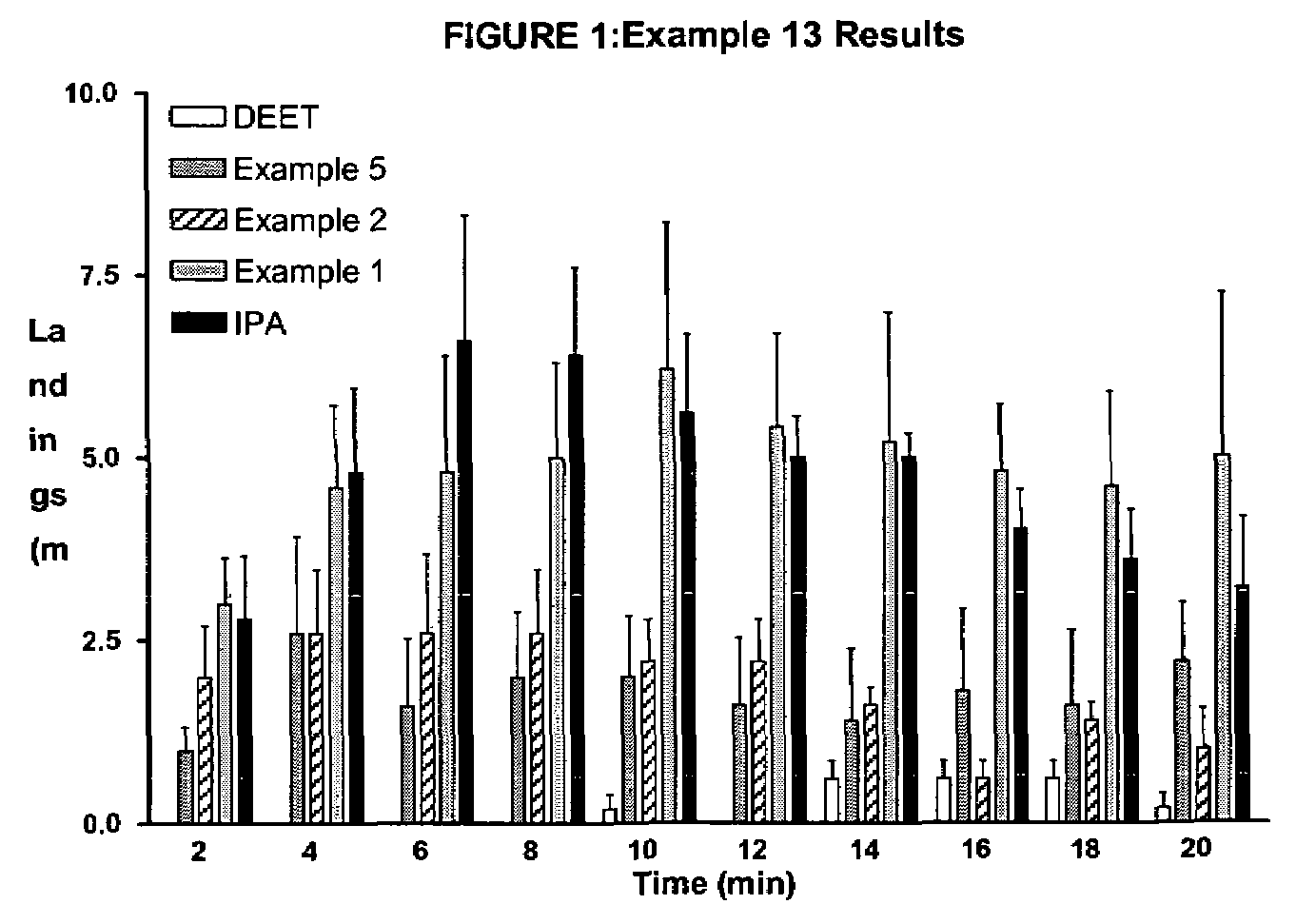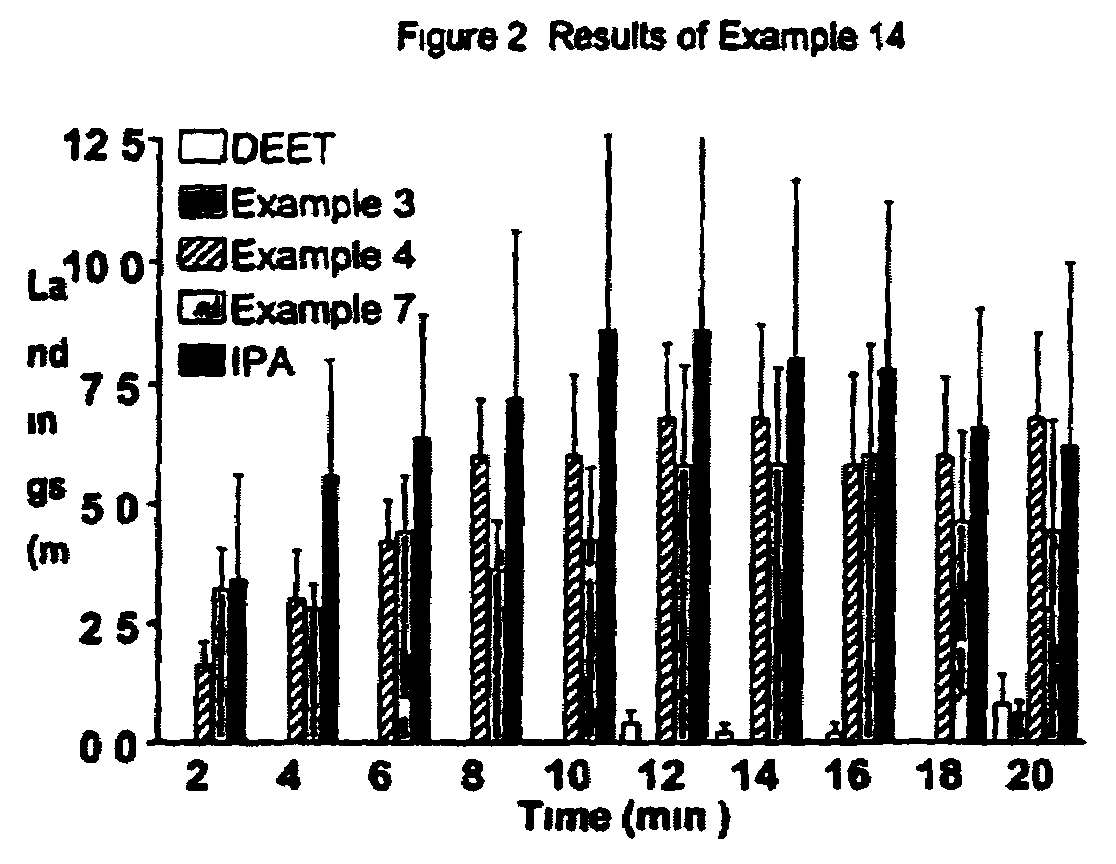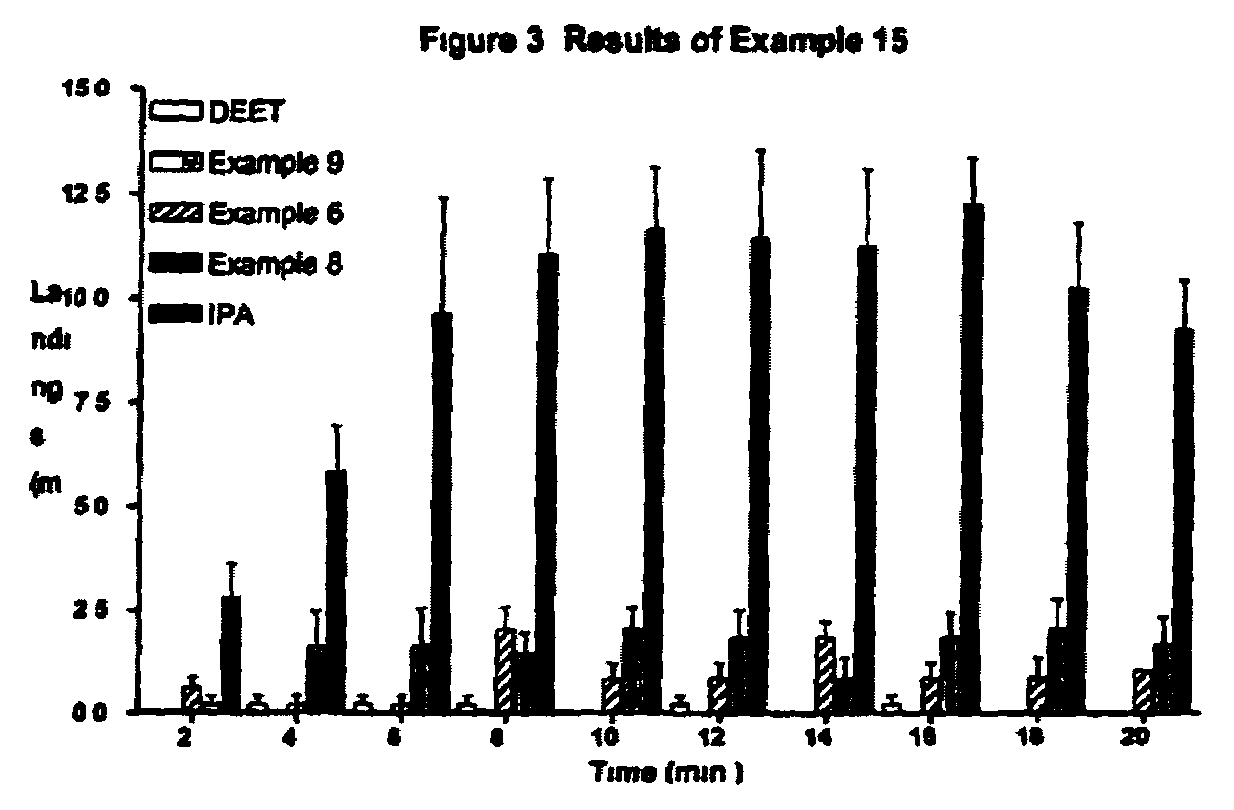Derivatives of dihydronepetalactone and method for preparation
a dihydronepetalactone and derivative technology, applied in the field of dihydronepetalactone derivatives, can solve the problem of difficult to predict which member of the iridoid monoterpenenoid family of compounds
- Summary
- Abstract
- Description
- Claims
- Application Information
AI Technical Summary
Benefits of technology
Problems solved by technology
Method used
Image
Examples
examples 1 – 12
EXAMPLES 1–12
General Procedures
[0073]All reactions and manipulations were carried out in a standard laboratory fume hood open in standard laboratory glassware. Nepetalactones were obtained by steam distillation of commercially-available catnip oil from catmint, obtained from Berjé, (Bloomfield, N.J.). All inorganic salts and organic solvents, with the exception for anhydrous THF, were obtained from VWR Scientific. All other reagents used in the examples were obtained from Sigma-Aldrich Chemical (Milwaukee, Wis.) and used as received. Determination of pH was done with pHydrion paper from Micro Essential Laboratory. The 3-substituted dihydronepetalactone products were purified by column chromatography and characterized by NMR spectroscopy. NMR spectra were obtained on a Bruker DRX Advance (500 MHz 1H, 125 MHz 13C) using deuterated solvents obtained from Cambridge Isotope Laboratories.
[0074]The batches of nepetalic acid employed in Examples 1–12 were prepared according to the following...
example 1
Preparation of 3-phenyl-DHN ((3R,4R,4aR,7S,7aR)-4,7-dimethyl-3-phenylhexahydrocyclopenta[c]pyran-1(3H)-one)
[0075]
[0076]An oven-dried 100 mL three-necked round-bottomed flask was cooled to room temperature (“RT”) under a steady stream of nitrogen. A solution of 500 mg of nepetalic acid in 10 mL anhydrous of THF was added to the flask and then cooled to 0° C. 363 mg of a suspension of 30% potassium hydride in mineral oil was weighed into another flask and washed with two 10 mL aliquots of hexane and removed by decantation once the solid settled. A further 10 mL aliquot of hexane was added to the solid and the resulting mixture was added to the three-necked round-bottomed flask in one portion. After twenty minutes, the resulting mixture was treated at 0° C. with phenylmagnesium bromide solution (4.1 mL of a 1M solution in THF) added drop-wise via syringe. After 30 minutes, the reaction warmed to room temperature and was stirred for 30 minutes. The mixture was acidified with 1N HCl drop...
example 2
Preparation of 3-p-tolyl-DHN ((3R,4R,4aR,7S,7aR)-4,7-dimethyl-3-(4-methylphenyl)hexahydrocyclopenta[c]pyran-1(3H)-one)
[0077]
[0078]An oven-dried 100 mL three-necked round-bottomed flask was cooled to RT under a steady stream of nitrogen. A solution of 1.9 g of nepetalic acid in 40 mL of anhydrous THF was added to the flask and then cooled to 0° C. 407 mg of a suspension of 30% potassium hydride in mineral oil was weighed into another flask and washed with two 10 mL aliquots of hexane and removed by decantation once the solid settled. A further 10 mL aliquot of hexane was added to the solid and the resulting mixture was added to the three-necked round-bottomed flask in one portion. After twenty minutes, the resulting mixture was treated at 0° C. with p-tolylmagnesium bromide solution (15 mL of a 1M solution in THF) drop-wise via syringe. After 30 minutes, the reaction warmed to RT and was stirred for 30 minutes. The mixture was acidified with 1N HCl drop-wise to pH=3.0 and extracted w...
PUM
| Property | Measurement | Unit |
|---|---|---|
| melting point | aaaaa | aaaaa |
| melting point | aaaaa | aaaaa |
| melting point | aaaaa | aaaaa |
Abstract
Description
Claims
Application Information
 Login to View More
Login to View More - R&D
- Intellectual Property
- Life Sciences
- Materials
- Tech Scout
- Unparalleled Data Quality
- Higher Quality Content
- 60% Fewer Hallucinations
Browse by: Latest US Patents, China's latest patents, Technical Efficacy Thesaurus, Application Domain, Technology Topic, Popular Technical Reports.
© 2025 PatSnap. All rights reserved.Legal|Privacy policy|Modern Slavery Act Transparency Statement|Sitemap|About US| Contact US: help@patsnap.com



